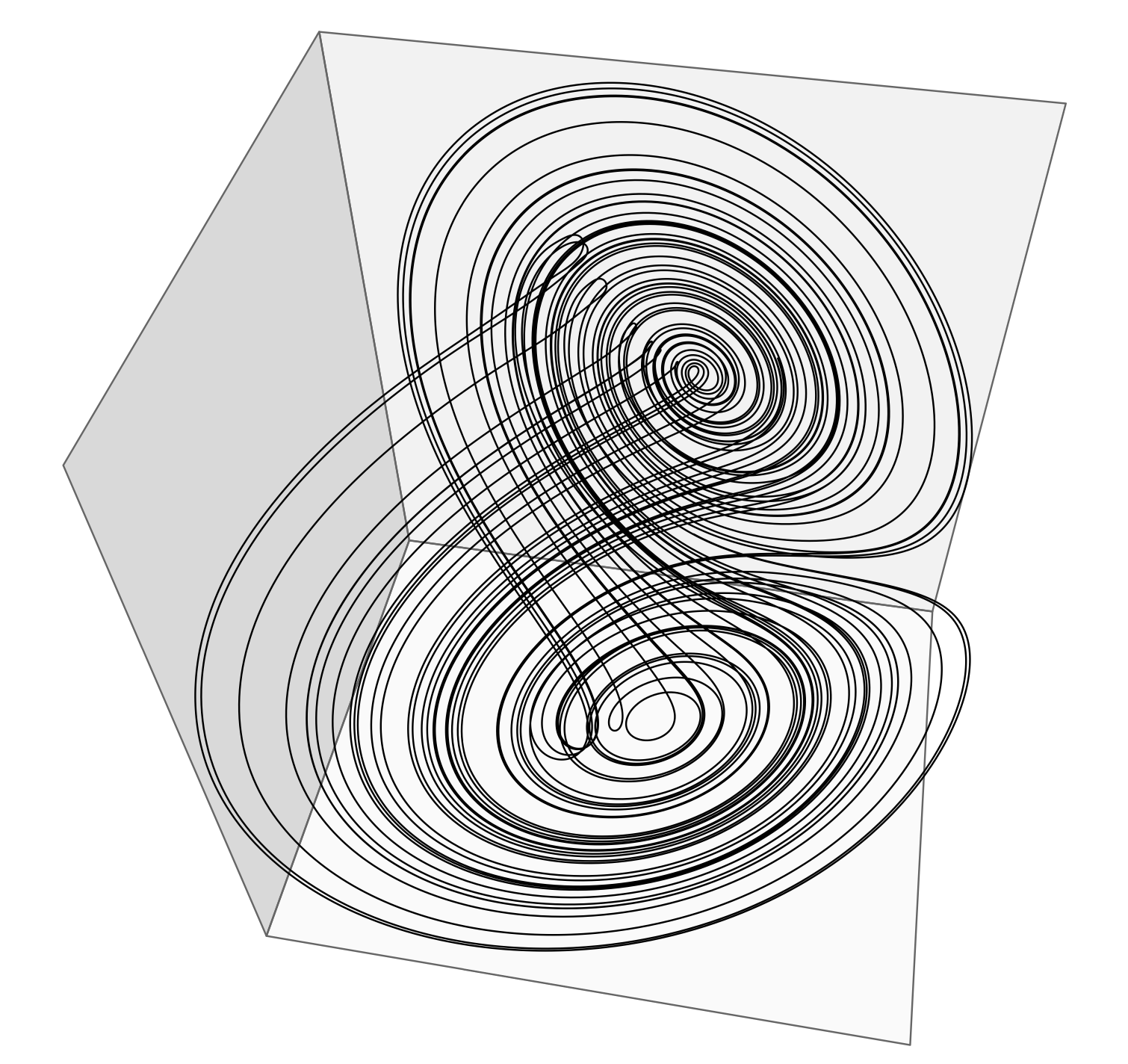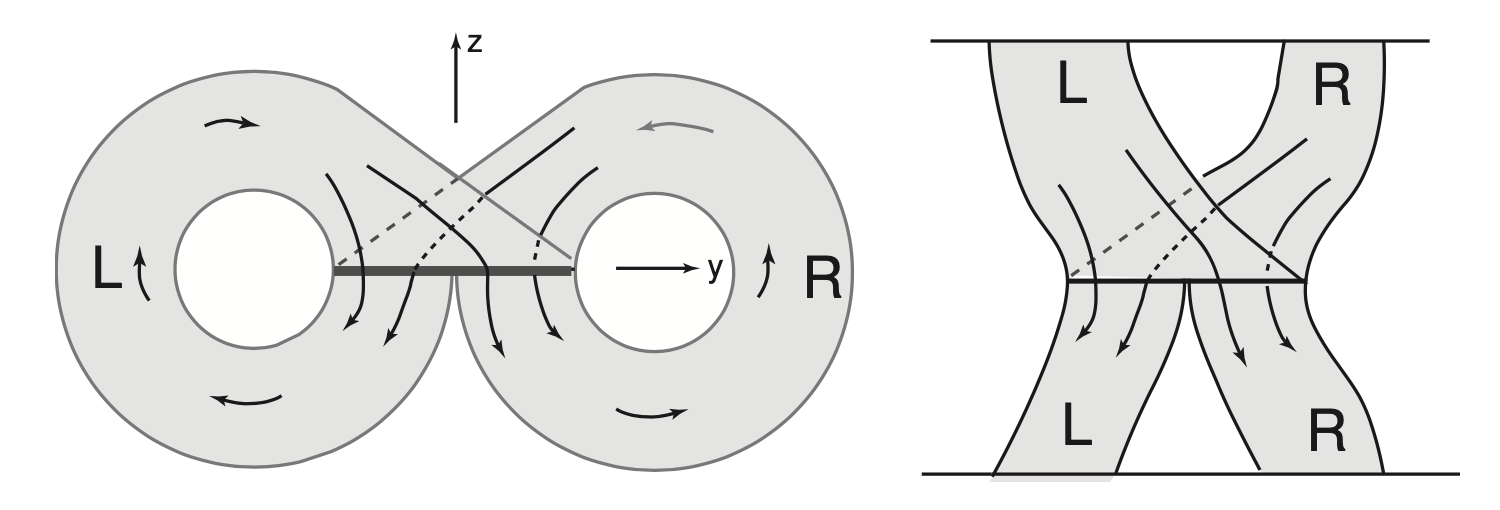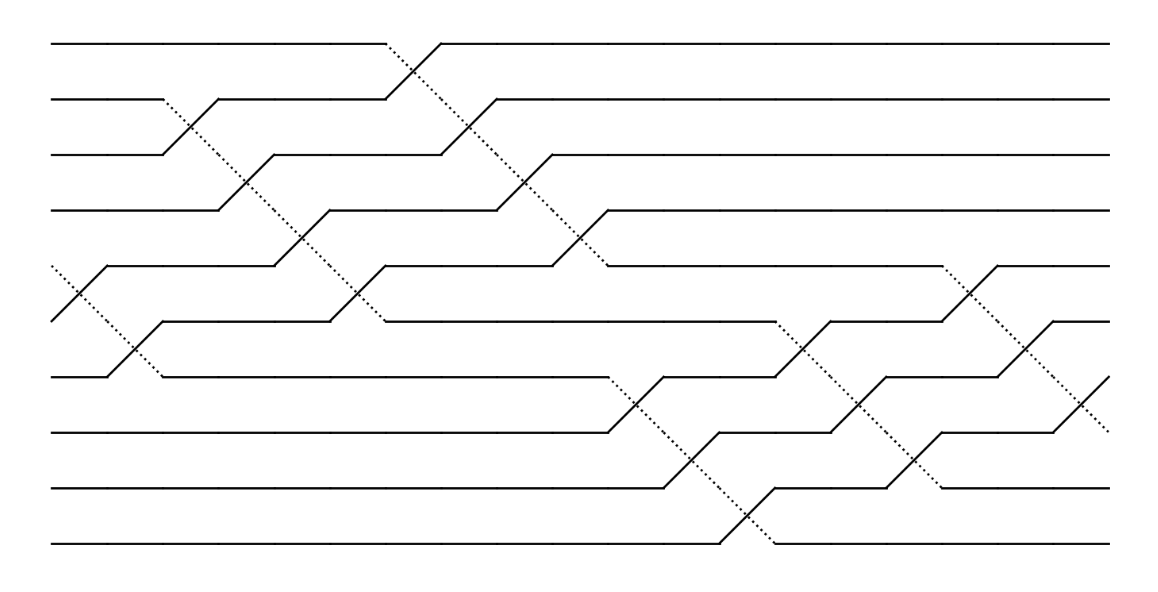Braids from Lorenz orbits
The Lorenz system
The Lorenz system is a system of differential equations given by
The original parameters studied by Lorenz were . For those parameters, the system exhibits a well-known “Butterfly-like attractor” with two lobes:

Among all orbits of the system, some of them form closed loops. They can be visually described by recording the sequence of lobes visited (R for right, L for left). This is best visualized through a template:

Closed braids as words
I wrote he small library LorenzBraids to be able to convert automatically a closed orbit given as a word, say LRLRRRLRRR, into a braid word (see Braid group) recording the crossings of the strands. The library also computes the braid in its ‘Dowker code’ form (Dowker notation).
The usage is very simple:
knot_string = 'LRLRRRLRRR'
lk = LorenzKnot(knot_string)
knot_code = str(lk.dowker_code())
print(f'The Lorenz Knot with word {knot_string} has Dowker code {knot_code}\n')
lk.convert_to_braid()
print(lk.braid)
>>> [4, 3, 7, 6, 5, 4, 8, 7, 6, 5, 2, 1, 0, 3, 2, 1, 4, 3, 2]The braid with its simple description can now be visualized :
braid_word = [4, 3, 7, 6, 5, 4, 8, 7, 6, 5, 2, 1, 0, 3, 2, 1, 4, 3, 2]
plot_braid(braid_word)

Hyperbolic volumes
One of the reasons why I wrote these scripts was to be able to feed directly a closed orbit into Snappy to be able to check when the (closed) orbit complement is hyperbolic. Snappy does the computation of the hyperbolic volume for such braids immediately:
import snappy as sn
from snappy import manifolds
from spherogram.codecs import DT
M = sn.Manifold('Braid[5, 4, 8, 7, 6, 5, 9, 8, 7, 6, 3, 2, 1, 4, 3, 2, 5, 4, 3]')
M.volume()
>>> 7.70691180281
